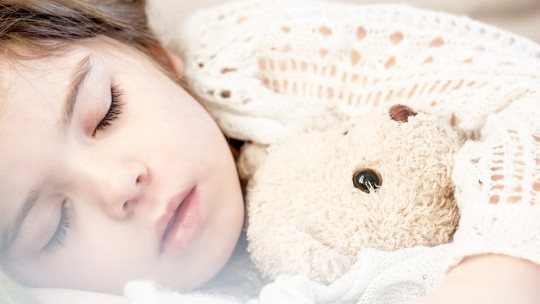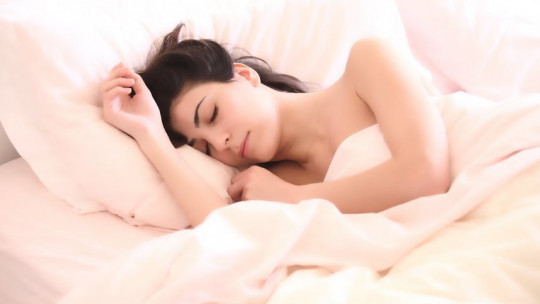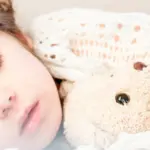Hypersomnia in children is a sleep disturbance which can occur in early stages of development. As its name indicates, it consists of excessive sleep that can significantly affect a person’s daily activities. It is the sleep disturbance opposite to insomnia.
Although it may be temporary, hypersomnia usually causes a lot of discomfort and can also be an indicator or precursor for the development of long-term sleep disorders, which is why it is important to address this alteration in a timely manner.
In this article we will see what hypersomnia in children is, what are its characteristics and causes, and finally some of the most recommended treatments
Related article: “Hypersomnia: types, symptoms, causes and treatments”
What is hypersomnia in children?
Hypersomnia (or primary hypersomnia) is a Non-Organic Sleep Disorder, also known as non-organic hypersomnia, according to the ICD (International Classification of Diseases, WHO).
This sleep disorder can be developed by both adults and children. In general terms, childhood hypersomnia is characterized by the presence of excessive daytime sleepiness, that is, due to the inability of children to stay awake
Some indicators could be, for example, if the child falls asleep at school, seems to be drowsy, or has a hard time paying attention to daily activities that require a pace appropriate for his or her age.
Related to the above, some difficulties associated with hypersomnia in children are poor school performance, the presence of mood disorders, and alterations of the immune system, the endocrine system or the metabolic system.
When hypersomnia occurs around adolescence, can even lead to the use of stimulants (such as caffeine) or depressants (such as alcohol), because they are used as tools to maintain wakefulness or to stimulate sleep.
Symptoms and WHO diagnostic criteria
It is estimated that, on average, a newborn sleeps 16 hours. The infant sleeps 12 to 14 hours; a child who is 3 to 5 years old sleeps 11 hours; and between 9 and 10 years of age, the child sleeps around 10 hours.
From adolescence and into adulthood, it is estimated that a person sleeps 7 to 8 hours a day. Due to this progressive decrease in hours of rest, Late childhood is considered the stage where our sleep has the best quality
However, it may happen that the hours of sleep that the child has seem not to be enough for him to achieve adequate rest and maintain the corresponding activities while awake.
If this also occurs for a long time, we can suspect that it is hypersomnia. For its diagnosis, the WHO considers the following criteria:
As there are no organic factors or medical diseases that explain drowsiness, the presence of hypersomnia may be an indicator that there is a more global psychological alteration. For example, hypersomnia is often related to the development of mood or depressive disorders.
Possible causes
The causes of sleep disorders vary according to the age of the person. Some may be physiological, other causes may be psychological and others may be related to the habits of the child himself and his family.
1. Changes in brain activity
The brain functions under three fundamental periods: wakefulness, REM (rapid eye movement) sleep, and non-REM sleep. During each period, the brain remains active and responds to external stimuli in different ways.
The periods that regulate activity during sleep are REM sleep and non-REM sleep, which alternate in different phases every 80-100 minutes. REM sleep, which is regulated by the activation of the noradrenergic system, and its phases increase in duration as dawn approaches.
One of the causes of hypersomnia and other sleep disorders may be natural changes in the physiology of the brain. For example, as development and chronological age increase, the depth and continuity of sleep change considerably; waking states are greater and some of the phases of REM sleep and Non-REM sleep decrease.
2. Psychological and social factors
Many times sleep disorders in children are related to stressful events that have not been adequately managed, but it also has to do with more specific issues such as the way caregivers direct the activities that occur before and after sleep.
For example, sleep disorders in children under 2 years of age may be related to parenting styles and with parental responses to child sleep-related behaviors. An even more specific example is the way parents are involved in their child’s sleep and wakefulness (at bedtime).
At school age, which is usually from 3 years old, sleep disorders are usually related to the way we set limits at bedtime. They are also related to previous habits that stimulate children in different ways, for example, watching TV, tablets, or reading stories can have different consequences on rest.
Likewise, hypersomnia and other sleep disorders May be linked to emotional exhaustion and chronic medical conditions that cause nocturnal awakenings.
How to evaluate and what is the treatment?
To evaluate hypersomnia in childhood, it is necessary to know the child’s sleep history, that is, to have access to a detailed description of the frequency, cycles and circumstances or habits associated with rest, and periods of activity and inactivity.
Likewise, it is necessary to know possible medical diseases, trauma or infections; and the activities you carry out during the day (for example, your eating schedule).
This is important because it allows us to detect if the dream has been modified from an early age or if it is related to a specific event. The most effective technique to find out this is through an interview with caregivers and educators and even towards the same child depending on age.
For treatment, it is important to consider that sleep is regulated by internal synchronizers (such as melatonin, body temperature or cortisol), and by external synchronizers (such as light and darkness, sounds, habits or stressful events).
The latter are the ones that largely determine the functioning of the former, and are also the easiest to modify. Therefore, one of the ways to treat hypersomnia in children is modify external synchronizers which will ultimately impact the internal synchronizers.









